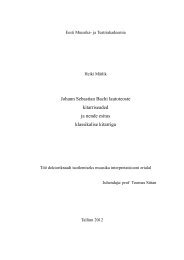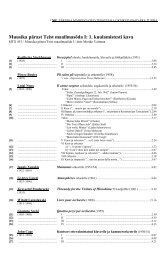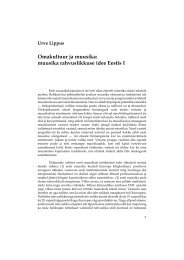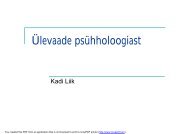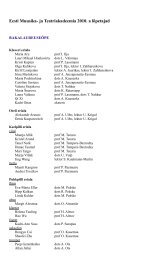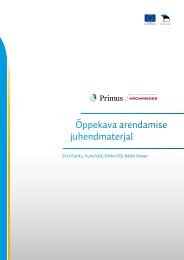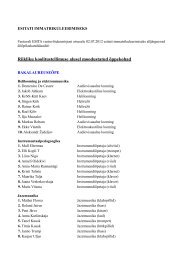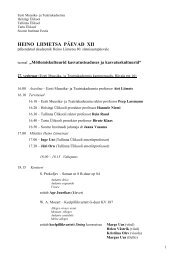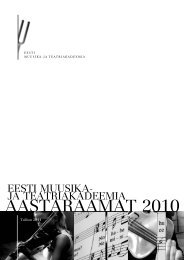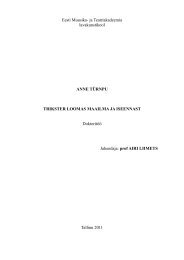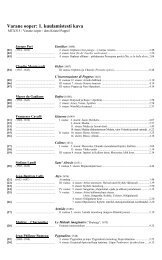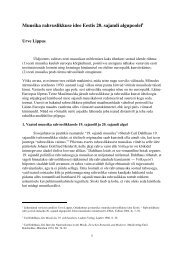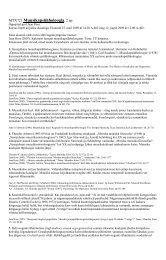Create successful ePaper yourself
Turn your PDF publications into a flip-book with our unique Google optimized e-Paper software.
<strong>ESTONIAN</strong><br />
<strong>ACADEMY</strong><br />
<strong>OF</strong> <strong>MUSIC</strong><br />
<strong>AND</strong><br />
<strong>THEATRE</strong><br />
Introduction<br />
During recent decades, EAMT has gone through a lot of changes and development, which<br />
includes creating new departments and specialities. While the main focus of EAMT is still<br />
on classical music and instrumental studies, accompanied by dramatic art, the academy<br />
today offers a number of other possibilities.<br />
Estonia has a strong piano tradition, but the same department also teaches harpsichord<br />
and organ. The string instruments include violin, viola, cello, double bass, harp and<br />
classical guitar. Among the wind instruments, flute, oboe, clarinet, bassoon, saxophone,<br />
French horn, trumpet, trombone and tuba are taught in EAMT, percussion<br />
instruments are in the same department. In the voice department it’s possible to study<br />
both opera singing and vocal chamber music. Conductors get different training to<br />
work with choirs, wind ensembles or orchestras. The skills of playing in chamber<br />
ensemble and accompanying other musicians are taught as well.<br />
The composition department nowadays incorporates the classical art of composing music<br />
and the specialities of electronic music and sound engineering that are taught in the<br />
electronic music studio. Musicology studies give an overview of different subdivisions of<br />
musicology (music history, music theory, ethnomusicology, cognitive musicology etc.);<br />
musicologists of EAMT also give an outstanding scholarly contribution. Jazz music<br />
department educates both jazz and folk musicians. Piano, strings, brass and woodwind<br />
instruments, recorder, accordion and Estonian zither called kannel are also taught in the<br />
Tartu branch of EAMT. Institute of interpretation pedagogics deals with educating<br />
musical instrument teachers while music education institute educates music teachers<br />
for elementary schools and high schools. Continuing education centre makes it possible<br />
to educate already active music teachers and organize master classes. The cultural<br />
management master’s programme with its guest lecturers has the most international<br />
dimension in Estonia, the same department co-ordinates the humanity subjects of the<br />
academy as well. The Drama School of EAMT educates the most dashing part of actors,<br />
stage directors and now also dramatists of Estonian theatre.<br />
10<br />
History<br />
Tallinn Higher Music School (nowadays Estonian Academy of Music and Theatre) was<br />
founded in 1919, only a year after Estonia was proclaimed independent. 383 students were<br />
admitted to the school and the teaching staff comprised of 28 teachers, most of whom<br />
had acquired their education at St. Petersburg Conservatoire. The first principal of the<br />
school was composer Mihkel Lüdig.



